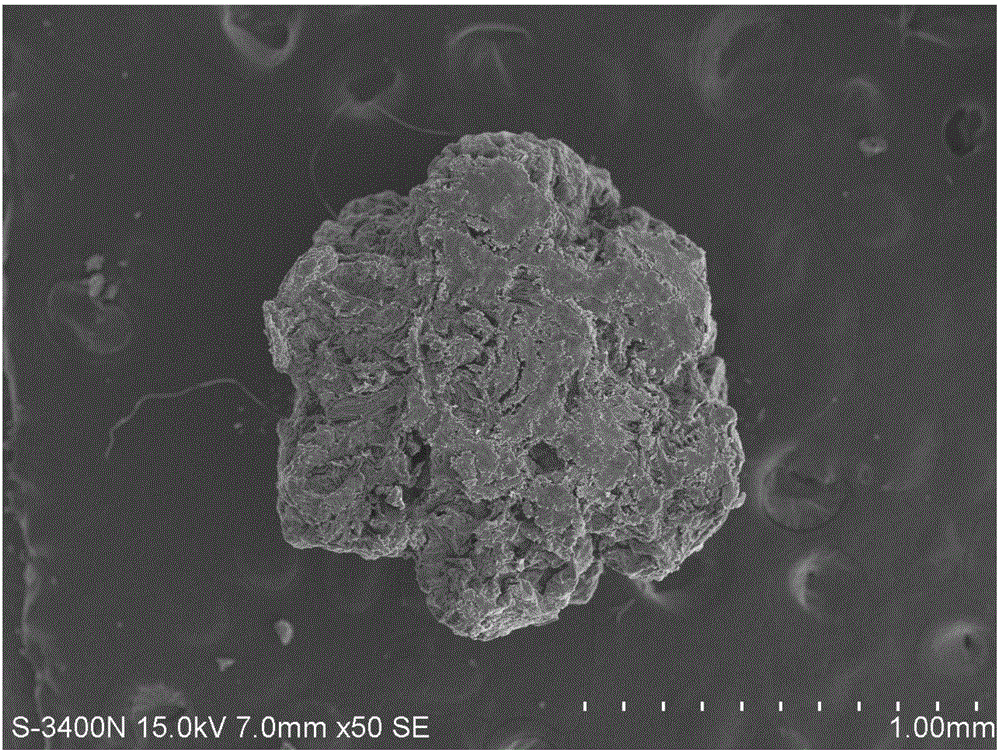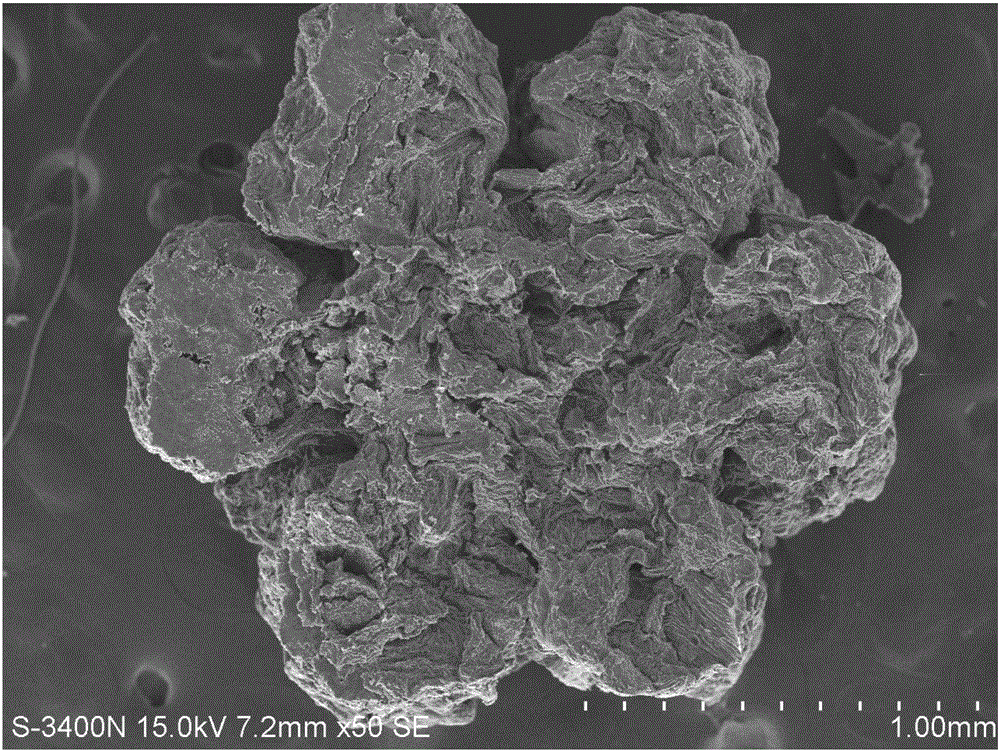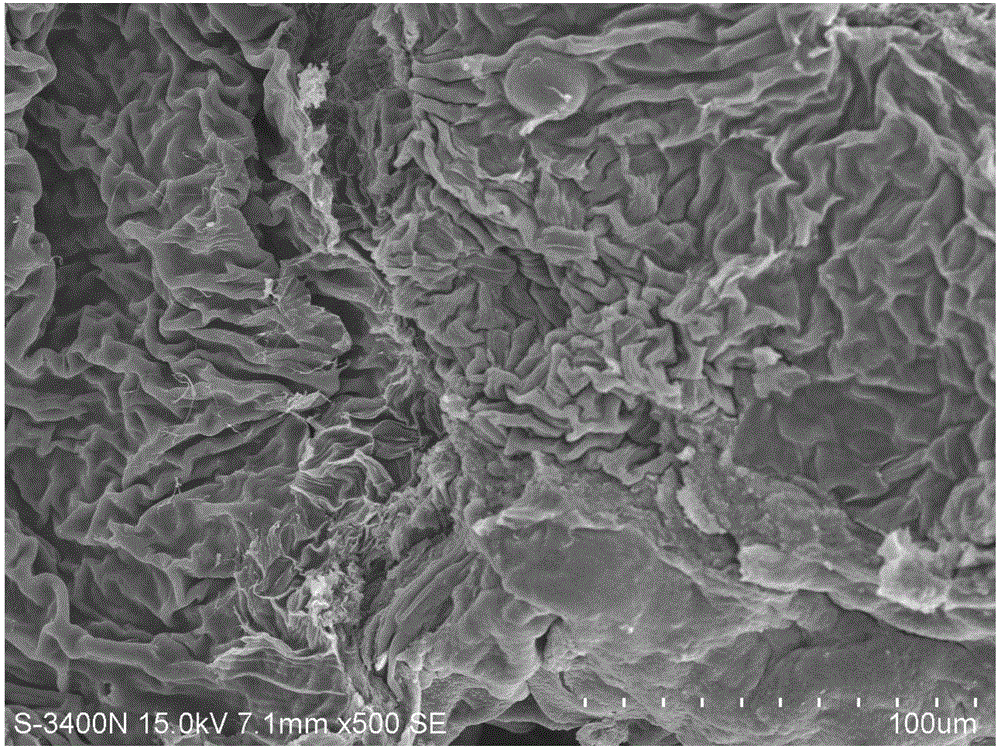High-specific-area O-doped surface-modified silkworm-excrement-based microporous carbon material as well as preparation method and application thereof
A high specific surface and surface modification technology, which is applied in the field of carbon materials, can solve the problems of excessive pesticide residues in agricultural products, non-target biological damage to the environment, and low efficiency of pesticide utilization, achieving the effects of short reaction time, reduced impact, and increased porosity
- Summary
- Abstract
- Description
- Claims
- Application Information
AI Technical Summary
Problems solved by technology
Method used
Image
Examples
Embodiment 1
[0034] A preparation method of silkworm excrement-based microporous carbon material with high specific surface O-doping surface modification, comprising the following steps,
[0035] (1) Mix and swell the original silkworm excrement and deionized water according to the mass-to-body ratio of 1:100. After swelling at 30°C for 3.0 hours, remove the silkworm excrement and freeze-dry it. First, freeze and pretreat at -20°C for 4 hours. Then lower the temperature to -60° C. and freeze-dry for 24 hours to obtain freeze-dried silkworm excrement.
[0036] in N 2 In the atmosphere, 10.0 g of freeze-dried silkworm excrement was raised to 750°C at a heating rate of 5°C / min, kept at 750°C for more than 3 hours, and then cooled to room temperature to prepare carbonized silkworm excrement.
[0037] (2) Mix carbonized silkworm excrement and KOH at a mass ratio of 1:1, 2 In the atmosphere, the temperature was raised to 700°C at a rate of 5°C / min, and kept at 700°C for 5.0h to carry out the p...
Embodiment 2
[0040] (1) Mix and swell the original silkworm excrement and deionized water according to the mass-to-body ratio of 1:120. After swelling at 35°C for 2.5 hours, remove the silkworm excrement and freeze-dry it. First, freeze it at -20°C for 3 hours. Then lower the temperature to -55° C. and freeze-dry for 36 hours to obtain freeze-dried silkworm excrement.
[0041] In an Ar atmosphere, 10.0 g of freeze-dried silkworm excrement was raised to 800°C at a heating rate of 5°C / min, kept at 800°C for more than 2.5h, and then cooled to room temperature to prepare carbonized silkworm excrement.
[0042] (2) Mix carbonized silkworm excrement and KOH at a mass ratio of 1:2, 2 In the atmosphere, the temperature was raised to 750°C at a rate of 5°C / min, and kept at 750°C for 4.0h to carry out the pore expansion reaction. After cooling down to room temperature naturally, the obtained solid was dissolved in 1mol / L HCl to wash and dissolve KOH. Then use deionized water to wash to pH ≈ 7, cent...
Embodiment 3
[0045] (1) Mix and swell the original silkworm excrement and deionized water according to the plastid ratio of 1:140, swell at 40°C for 2.0 hours, remove the silkworm excrement and freeze-dry it, and first freeze and pretreat it at -25°C for 2 hours, Then lower the temperature to -50° C. and freeze-dry for 48 hours to obtain freeze-dried silkworm excrement.
[0046] in N 2 In the atmosphere, 10.0 g of freeze-dried silkworm excrement was raised to 850°C at a heating rate of 5°C / min, kept at 850°C for more than 2.0 hours, and then cooled to room temperature to prepare carbonized silkworm excrement.
[0047] (2) Mix carbonized silkworm excrement and KOH at a mass ratio of 1:3, 2 In the atmosphere, the temperature was raised to 800°C at a rate of 5°C / min, and kept at 800°C for 3.0h to carry out the pore expansion reaction. After cooling down to room temperature naturally, the obtained solid was dissolved in 1mol / L HCl to wash and dissolve KOH. Then use deionized water to wash to...
PUM
| Property | Measurement | Unit |
|---|---|---|
| adsorption capacity | aaaaa | aaaaa |
| Loading capacity | aaaaa | aaaaa |
Abstract
Description
Claims
Application Information
 Login to View More
Login to View More - R&D Engineer
- R&D Manager
- IP Professional
- Industry Leading Data Capabilities
- Powerful AI technology
- Patent DNA Extraction
Browse by: Latest US Patents, China's latest patents, Technical Efficacy Thesaurus, Application Domain, Technology Topic, Popular Technical Reports.
© 2024 PatSnap. All rights reserved.Legal|Privacy policy|Modern Slavery Act Transparency Statement|Sitemap|About US| Contact US: help@patsnap.com










